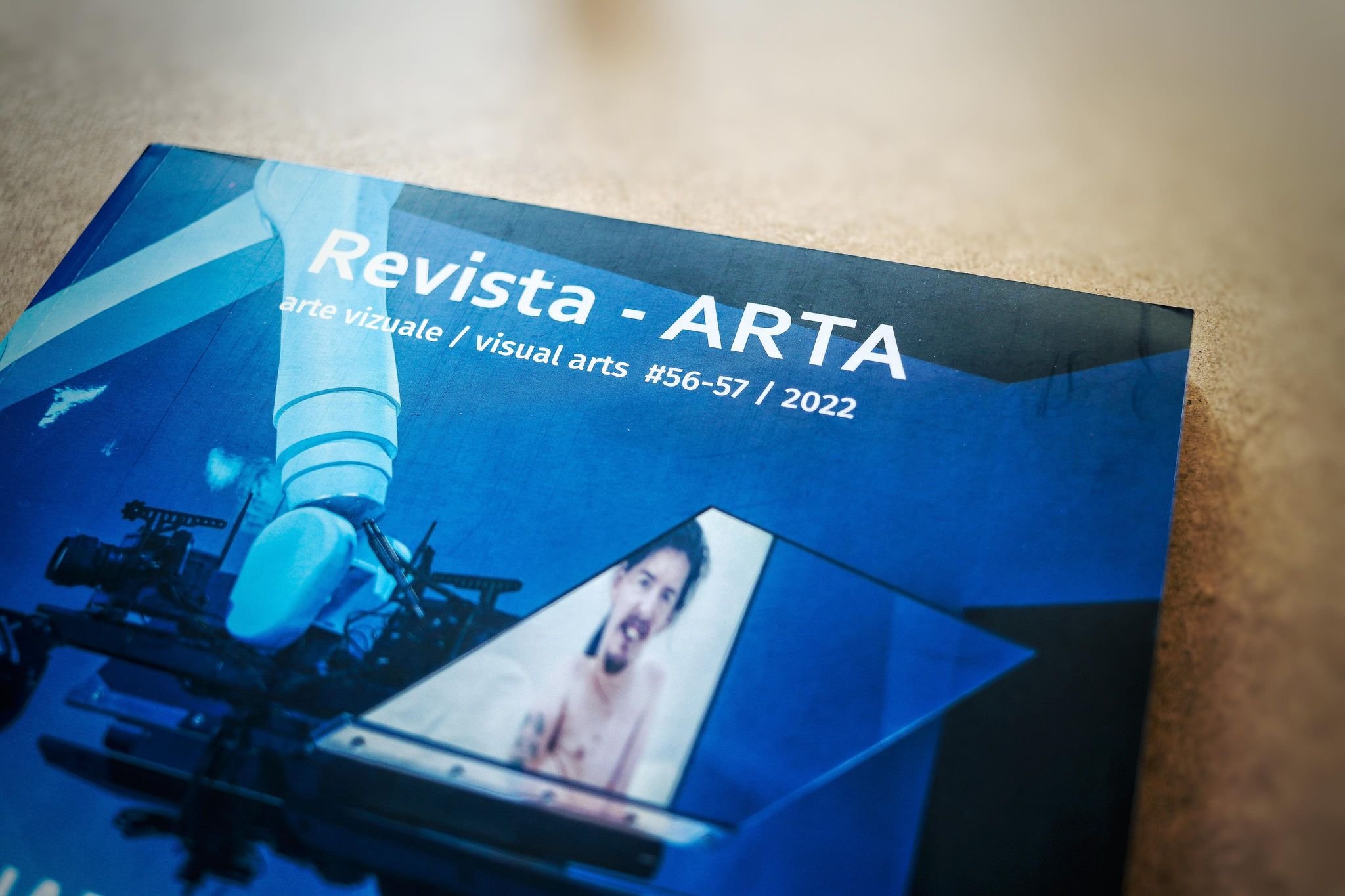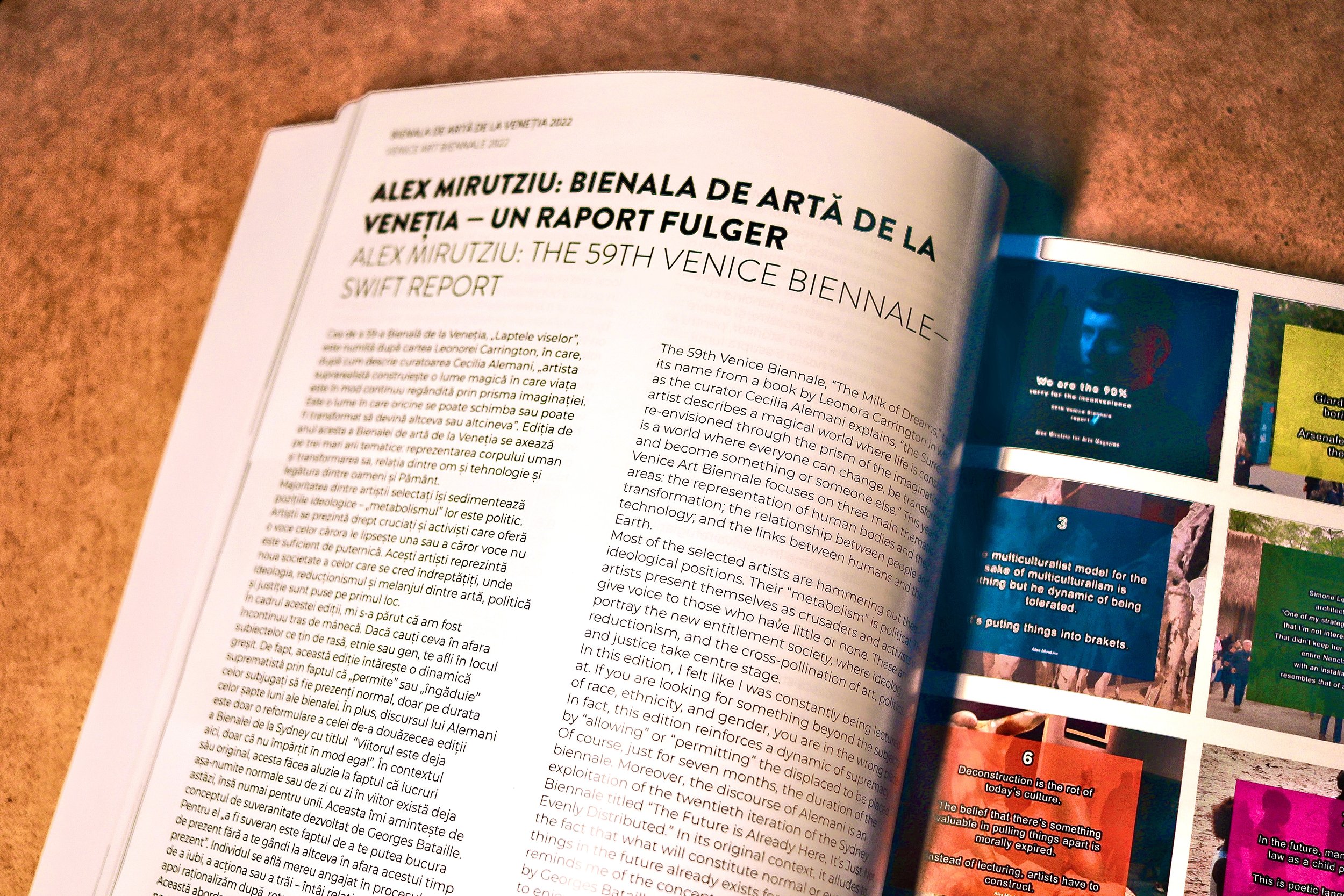ALEX MIRUTZIU – BOTTOMS KNOW IT, 2019
Valentina Iancu's writing about Alex Mirutziu's art is in a league of its own. From the publication Revista ARTA comes this thoughtful piece about the LGBTQ+ art scene in Romania.
“Ion Grigorescu’s unintentional queer touches were an inspiration for the young artist Alex Mirutziu (b. 1981), one of the first artists in Romania to consciously use a queer vocabulary. In his artworks, Mirutziu explicitly articulates his homosexual subjectivity, exploring his own desire, love, fear, pulsation and compulsion. Mirutziu centers his work on the body, often using his body to return the gaze, while making subtle sense of a “sinful and pathological” desire. Alex Mirutziu finished his visual art studies in Cluj-Napoca in 2001, the same year that homosexuality was decriminalized. He is a multidisciplinary artist working with performance, video art, theoretical texts, poetry, and drawing. His politics are oriented toward personal poetics, queerness being implicit, often abstract. Mirutziu makes use of metaphor to form an abstract queer vocabulary, understanding his art as “a protest”. Mirutziu only began including video art in his practice in 2017, extending some performances in new video art works. He doesn’t consider the documentation of a performance a work of art. Similarly, a video-documentation of a painting may not be seen as a new piece of art. His video performances ”Dignity to the Unsaid”, ”The Gaze is a Prolapse Dressed in Big Business” (2018) and ”Bottoms Know It” (2019) have performances as a starting point but end up as unique video artworks often incorporating new scenarios. Mirutziu builds his subjects rhizomatically, carefully connecting ideas so as not to fall into categorical thinking. His work investigates queer issues, mixing theoretical approaches with intuition. For example, ”Bottoms Know It” aims to give access to a distinct type of knowledge, that of the complicated relationship we have with our assholes. Centered on the poetics of anality, hence of openings, entrances, closings, exits, centers, and holes it deploys means of seeing and understanding the world and the ‘other’ taking disappearance and debasing of the self as the subject and gateway to a more profound grasp of our humanity.”
In the performance/video, three local performers (dancers) are put into situations of visual alienation. Conversing and debating about the limitations of the body, they engage in an absurdist philosophical dialogue. Anal poetics is a way of queering a penis-oriented masculinity. Anal pleasure is seen as a pathological pleasure and as a feminizing pleasure. It is hence often refused by heterosexual males out of fear of homosexuality, largely being associated with gay sexuality.”
The text was first published by East European Film Bulletin.
Valentina Iancu scrie just despre arta lui Alex Mirutziu. În publicația Revista ARTA ea descrie cu considerație scena LGBTQ+ din România.
”Valențele (neintenționat) queer care pot fi atașate artei lui Ion Grigorescu au fost o sursă de inspirație pentru tânărul artist Alex Mirutziu (n. 1981), unul din primii artiști români ce a utilizat un vocabular în mod conștient queer. În lucrările sale, Mirutziu își articulează subiectivitatea homosexuală în mod explicit, explorându-și dorința, dragostea, frica, pulsiunile și impulsurile. Mirutziu își axează lucrările pe corp, folosindu-și deseori corpul pentru a întoarce privirea spre privitor, creând în același timp un sentiment de dorință „păcătoasă și patologică”. Alex Mirutziu a terminat studiile în artă vizuală în Cluj-Napoca în 2001, în același an în care homosexualitatea a fost dezincriminată. Este un artist multidisciplinar ce lucrează cu performance-ul, arta video, textele teoretice, poezia și desenul. Politica sa se orientează spre poetica personală, cu un substrat queer implicit, abstractizat.. Mirutziu se folosește de metaforă pentru a formula un vocabular queer abstract. Pentru el, arta sa este „un protest”. Artistul a început să includă arta video în practica sa în 2017, extinzându-și unele performance-uri în mediul artei video. Acesta nu consideră documentarea unui performance drept operă de artă per se. În mod asemănător, documentarea video a unei picturi nu ar fi ea însăși o lucrare de artă. Performance-urile sale video ”Dignity to the Unsaid”, ”The Gaze is a Prolapse Dressed in Big Business” (2018) și ”Bottoms Know It” (2019) pornesc de la performance-uri, însă ajung să fie opere unice de artă video, incluzând adesea scenarii noi. Mirutziu își construiește subiecții în mod rizomatic, conectând ideile în așa fel încât să nu cadă în gândirea categorică. Operele sale cercetează problematici queer, punând laolaltă abordările teoretice și intuiția. ”Bottoms Know It”, de exemplu, urmărește să „ofere acces la un tip anume de cunoaștere, acela al relațiilor complicate pe care le avem cu găoazele noastre. Axându-se pe poetica analității, deci a deschiderilor, intrărilor, închiderilor, ieșirilor, centrelor și găurilor, lucrarea angrenează mijloace de a vedea și înțelege lumea și pe «celălalt», luând dispariția și înjosirea sinelui drept subiectul și calea către o mai profundă concepție asupra umanității noastre.
În acest performance/video, trei performeri (dansatori) locali sunt puși în situații de alienare vizuală. Discutând și dezbătând limitele corpului, aceștia se lansează într-un dialog filosofic absurd. Poeticile anale reprezintă un mod de a queeriza un anumit tip de masculinitate bazat pe penis. Plăcerea anală este văzută drept o plăcere patologică și feminizatoare. Fiind asociată în general cu sexualitatea gay, este astfel deseori respinsă de bărbații heterosexuali dintr-o frică de homosexualitate.”
Traducere în limba română de Rareș Groza și Marina Oprea. Textul original a fost publicat de East European Film Bulletin.










